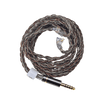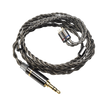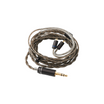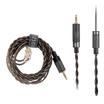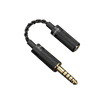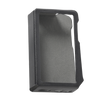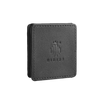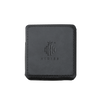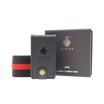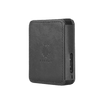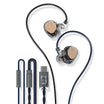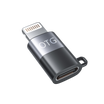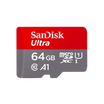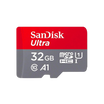June 19, 2022
Why Hidizs Supports MQA Audio Technology?
There are 4 mainstream audio file formats on the market: PCM, DSD, MQA, and AAC.
The most common pure audio formats are lossless and lossy formats derived from PCM, such as .wav, and derived compression formats such as .flac, .ape, and music player. The distinctive feature of PCM is that the sampling accuracy and sampling rate can be adjusted. Various possibilities are available depending on the context, including 16 bit/44.1 kHz, Hi-Res quality above 24 bit/96 kHz (DVD Audio), and even analog quality as low as 8 kHz. In short, the higher the format, the larger the file and the clearer it is; you can only avoid substantial file volume compression by sacrificing quality. Currently, almost all audio playback devices support PCM audio.
DSD
DSD (Direct Stream Digestive) uses a 1-bit mode to record pulse signals. The sampling rate of 1 Bit DSD signal of 2.8M is 64 times that of the CD format of 44.1 kHz, and that of 5.6M is 128 times the sampling rate of the CD format. Hardware decoding eliminates the need for DSD over PCM conversion. DSD256 refers to DSD 1-bit 11.2MHz format, and the sampling rate is 256 times that of CD.

In other words, at present, the smallest DSD file is DSD64, that is, 1bit 2.8MHz (SACD specification). For tracks of this specification, a single song could reach several hundred MB, and you would need 2-4 G for an album. Even though mobile phone memory and memory cards are now available in 1TB, DSD64 files are still too large, while higher quality formats take up even more storage space.
MQA
MQA stands for Master Quality Authenticated, an award-winning British technology that delivers the sound of the original master recording.MQA uses a unique 'origami' folding technique to fold the audio signal in a smaller enough file to stream and uses an "unfolding" method to playback high-definition content. The non-unfolded mode will reproduce ordinary definition i.e. in .flac format, 2X unfolding produces Hi-Res definition of 24Bit/96kHz, 4X unfolding produces 24Bit/192kHz, 8X unfolding produces 24Bit/384kHz, and 16X unfolding produces 768 kHz, but the file size hardly increases, because of the increased folding rate.

AAC
AAC is mainly designed for high compression ratio and multi-channel sounds, which is used for audio-visual and streaming media more so than pure music. AAC is also widely supported, in fact, the Bluetooth transmission protocol for Apple phones and headsets is AAC.
All audio formats have advantages and disadvantages. Let's take a look.
PCM
PCM: "Bit" represents sampling accuracy, while "kHz" refers to times sampled. The larger the number of bits, the higher the sampling accuracy, and the larger the number of kHz, the more sampling times and the better the coherence. Therefore, the waveform played back by PCM is quite close to the actual sound, which is highly suitable for music playback. However, its shortcomings are also obvious: the lack of sound quality in a lossy format, the large file size of lossless music, and the volume after lossless compression are still at least 1/2 of the source file, putting audiophiles in awe of this HD format.

Streaming services currently provide online listening in CD quality and downloads in HD formats. Ultra-high-definition for online listening is still years away.
DSD: As its full name indicates, Direct Stream Digital uses the difference in pulse signal density to fit the waveform, so the sampling times are much higher than PCM, and the amount of information continuously captured is also larger. Theoretically, the definition of 1 bit in DSD is at least equivalent to 16 Bit 176.4kHz, but the accuracy is higher than 24 bit PCM.
But the reality deviates a bit from the ideal. Because most of the early digital recordings are recorded in PCM, if you want to listen to them in DSD, the early digital recordings must be converted from PCM, which gives rise to the absolute disadvantage in the number of sound sources. Besides, the DSD format itself cannot be tuned, so it needs to be converted to PCM-like formats with high sampling accuracy: DXD is produced or simulated, which is tedious and time-consuming. This is due to excessive file size and a large number of false ultra-high sampling rate audio sources on the network, which undermines the listening experience for users.
At the same time, the oversized files created by ultra-high format DSD require a transmission speed of tens of megabytes per second, which is absolutely unworkable in the streaming world.
Therefore, although MQA is a rising star in streaming, ordinary lossless files carry the bulk of data flow in high-definition format, thus becoming a new favorite. It enables users to get "the sound of the original master recording" and at the same time eliminates the issue of gigantic files.

Ultimately, MQA is fundamentally derived from PCM, and the key lies in the "packaging" technology: First of all, when the user is completely unaware of MQA and it’s unsupported by a device, it will be decoded as an “ordinary lossless”, since the MQA packaging format is FLAC (note that the format does not represent specifications), but this will not give you the actual MQA experience!
The reason is, although the UHF band is very wide, the information it carries is not as voluminous, so it can be packaged and "folded" in the enclosed area, and if it isn’t unfolded, the sound in the original band can be essentially kept as it is.
If you have a device that supports MQA, the device will recognize this part of the "folded" area and unfold it. However, depending on the different unfolding capabilities of the device, such as when a 16X file is in a device that only supports MQA 2X, it may only be unfolded by 2X. But MQA has an impressive feature: multiple unfoldings. The technology packages music recordings [as 44.1 or 48 kHz files] for efficient streaming and storage. The MQA decoder unfolds to the original resolution, or to the highest capability of the hardware. This technology is called MQA Renderer, and compatible devices, such as the new Hidizs S3 Pro, support this continuous unfolding.

Does MQA increasingly get better with more unfoldings? We don't think so:
First, the limitation of the sound source, 8X is equivalent to PCM 24Bit/384kHz, while 32Bit/384kHz is the limit of most recording devices. Higher format support is certainly an innovation in hardware, but there are still some limitations in practice (moreover, the higher the format, the smaller the audible difference, so there is no need to blindly pursue the "highest" unfolding).
Second, the "folding" and "unfolding" of MQA will actually cause some damage to the sound quality, such as the lack of density, so we can't blindly pursue higher unfolding rates.
Third, the increase in purchase cost and other costs such as power consumption caused by supporting higher unfolding rates cannot be disregarded.
Therefore, HIDIZS is invested in the cost-performance ratio of our products and, as a result, has launched products with 4X basic support + MQA Renderer, such as the S3 Pro (up to 8X support) linear DAC AMP (portable dongle), DH80S DAC amp (8X MQA support) and the new AP80 PRO-X lossless audio player which directly supports 8X MQA hardware decoding.
In addition, the difference between MQA and PCM is greater than that of PCM and DSD, as well as lossless or lossy formats from PCM, provided that you have a headphone that can playback ultra-wideband files to get the complete audio experience. The Hidizs MS1 Rainbow, MS2, and a range of new Hi-Res in-ear monitors can clearly deliver the stereo-like and airy quality of the MQA format.


